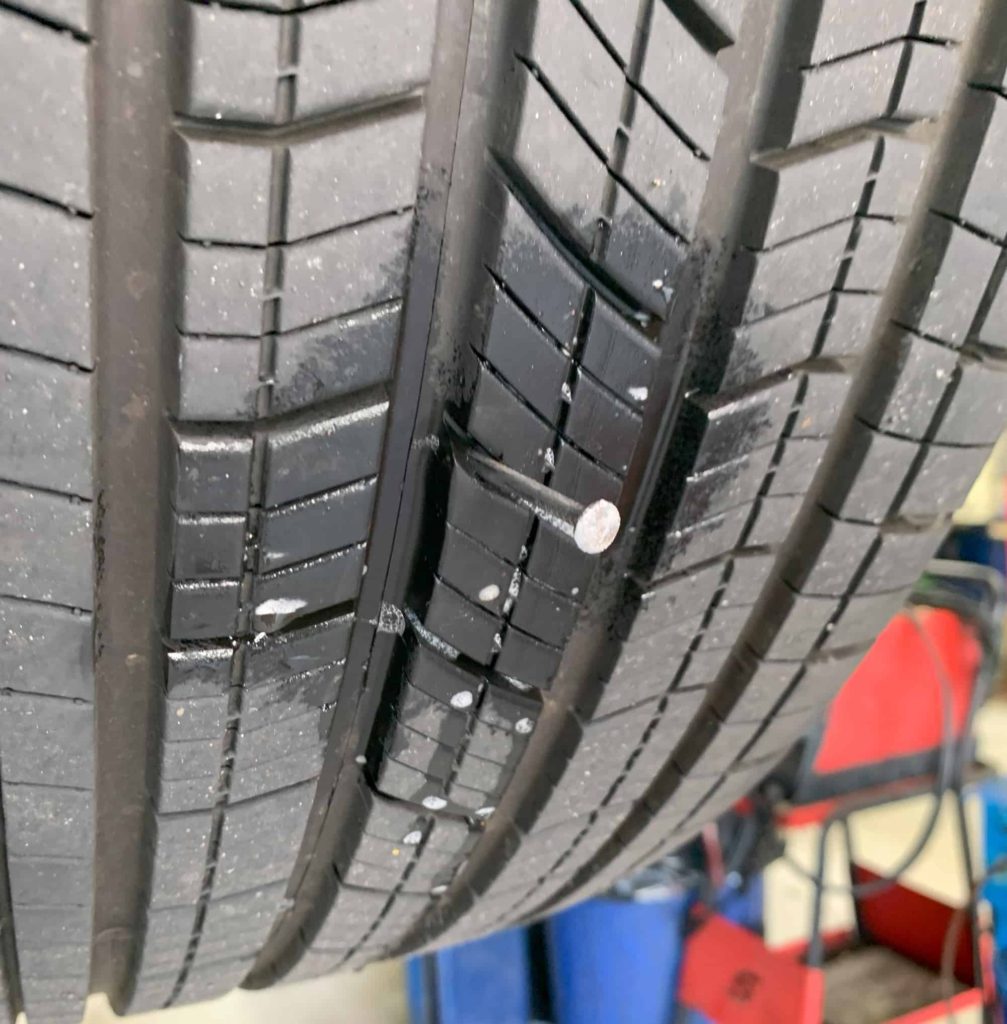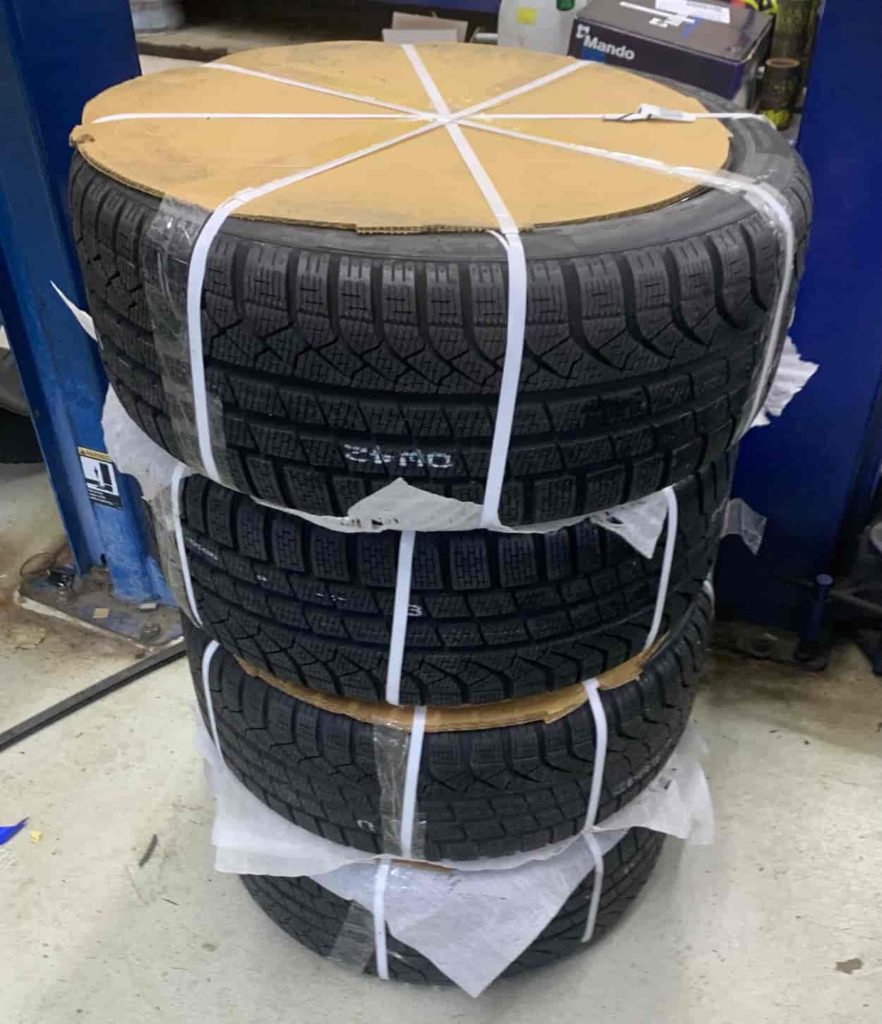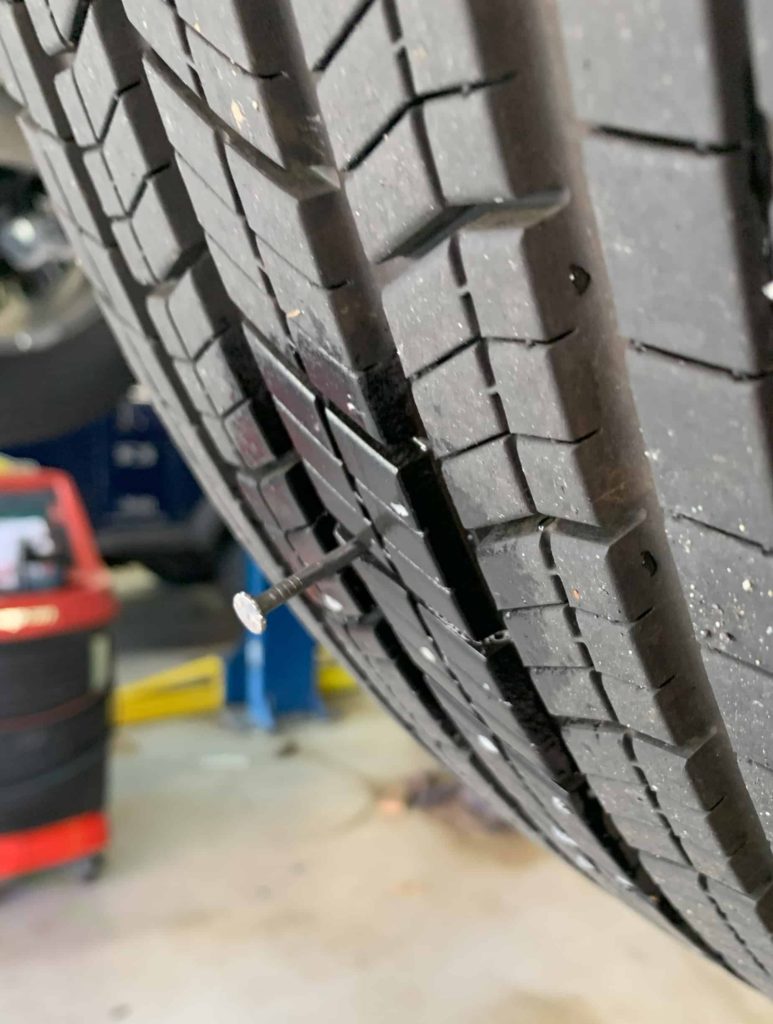Understanding Tire Warranties
Tire warranties serve as a vital aspect of the automotive industry, providing consumers with a sense of security and protection. Understanding the intricacies and nuances of tire warranties is crucial for any vehicle owner because it ensures that you can make informed decisions when purchasing tires and effectively navigate potential issues that may arise in the future. From coverage for defects in materials and workmanship to treadwear warranties, tire warranties encompass a wide range of benefits and limitations.
In this comprehensive guide, we will delve into the world of tire warranties, exploring the various types available, their durations, and what they typically cover. By equipping yourself with this knowledge you’ll be better equipped to make wise choices regarding your tire investments.
Why You Need to Understand Tire Warranties
Understanding tire warranties is paramount for any vehicle owner looking to maximize their investment and ensure peace of mind on the road. A warranty acts as an agreement between the manufacturer or retailer and the customer, outlining the terms under which the tires are protected against certain defects or premature wear. By comprehending these terms thoroughly before purchasing tires you can effectively evaluate different brands and models based on their warranty coverage.
Being aware of what is included or excluded in a warranty allows you to properly maintain your tires to preserve their coverage. Without this understanding you may inadvertently render their warranty void by failing to meet specific requirements or unknowingly engaging in activities that nullify its protections.
Tire Warranty Basics
A tire warranty is a written guarantee provided by the tire manufacturer or retailer to the consumer. It assures that the tire product will be free from defects or will meet certain performance standards for a specified period of time. This warranty serves as a form of protection for consumers in case their tires experience any issues within the coverage period. Understanding the basics of tire warranties is crucial for consumers to make informed decisions when purchasing tires and to know their rights in case of any problems.
What is a Tire Warranty?
A tire warranty is a legally binding agreement between the manufacturer/retailer and the consumer that outlines the terms and conditions under which the tire is covered. It provides assurance that if there are any defects in materials, workmanship, or if certain performance standards are not met, then appropriate remedies will be offered by either replacing or compensating for defective tires. This warranty typically covers a specific duration and mileage limit.
Types of Warranties
Tire warranties can be broadly categorized into three types: manufacturer warranties, retailer warranties, and extended warranties.
Manufacturer warranties are provided directly by tire manufacturers such as Michelin, Bridgestone or Goodyear.
Retailer warranties are offered by retailers who sell tires like Walmart, Discount Tire or local dealerships.
Extended warranties are optional coverage plans that can be purchased separately from third-party providers to extend the duration and coverage of original warranties.
Duration and Mileage Coverage
The duration and mileage coverage offered by tire warranties vary depending on each manufacturer or retailer’s policies. Generally most standard manufacturer warranties cover a duration ranging from 4 to 6 years from the date of purchase.
Mileage coverage can range anywhere between 40,000 to 80,000 miles depending on factors like tire type (passenger, truck, performance), tire model, and specific warranty terms. It’s important for consumers to carefully review the warranty documentation to understand the specific coverage period and mileage limits provided by each manufacturer or retailer.
Manufacturer Warranties
Coverage for Defects in Materials and Workmanship
One of the most crucial aspects of tire warranties is the coverage provided by manufacturers for defects in materials and workmanship. A defect refers to any irregularity or imperfection that affects the tire’s overall performance or safety. It can manifest as issues such as bulges, bumps, bubbles, separations, or even air leaks.
Manufacturers typically offer coverage for a specified period, starting from the date of purchase or installation. This coverage ensures that if a defect arises during this period the manufacturer will take responsibility for repair or replacement at no additional cost to the consumer.
What Constitutes a Defect?
Defining what falls under the category of a defect is essential to ensure clarity and fairness in tire warranties. Generally, a defect is regarded as any abnormality that occurs during the manufacturing process which impairs tire performance or safety. This includes issues like uneven tread wear patterns, belt separation, sidewall cracks, or any other structural abnormalities not caused by external factors like road hazards or improper usage.
How Defects are Determined and Resolved by Manufacturers
To determine whether an issue falls under warranty coverage as a defect, manufacturers employ rigorous evaluation processes. They often conduct thorough inspections on returned tires to assess if the problem was indeed caused by manufacturing defects rather than misuse or external influences.
These evaluations involve examining various aspects such as tread wear patterns, evidence of impact damage, and material integrity. Once they establish that the issue is indeed due to a manufacturing defect within their defined warranty terms, manufacturers will take appropriate measures either through repair or replacement based on their warranty policy.
Treadwear Warranties
Another critical aspect of manufacturer warranties relates to treadwear coverage. Treadwear refers to how long a tire’s tread lasts before it wears out. Manufacturers often provide treadwear warranties that guarantee a certain mileage expectancy for their tires.
This is typically expressed as a specific number, with higher numbers indicating a longer-lasting tread life. Understanding these warranties is crucial for consumers to assess the value and longevity of the tires they purchase.
Understanding UTQG Ratings
To help consumers make informed decisions regarding tire performance and treadwear, the Uniform Tire Quality Grading (UTQG) system was established. This system provides standardized ratings for three important aspects: treadwear, traction, and temperature resistance.
The treadwear rating provided under UTQG signifies how long a tire’s tread is expected to last compared to a reference tire. Higher UTQG ratings indicate better longevity while lower ratings imply quicker wear.
Prorated Vs. Non-Prorated Coverage for Treadwear
Treadwear warranties can be further classified as either prorated or non-prorated coverage. Non-prorated coverage offers full compensation or replacement if the tire wears out prematurely within the defined warranty mileage without any additional costs borne by the consumer. On the other hand, prorated coverage means that compensation is proportionate to the remaining usable mileage of the tire at the time of replacement or refund request. As tires age or reach higher mileage thresholds proration gradually reduces reimbursement amounts until it eventually expires.
Retailer Warranties
Differences Between Manufacturer and Retailer Warranties
It’s essential to understand the distinctions between tire manufacturer and retailer warranties. While both types offer coverage they differ in terms of responsibility and scope. Manufacturer warranties are provided by the tire brands themselves and cover defects in materials and workmanship.
On the other hand, retailer warranties are offered by the sellers of tires, such as tire shops or online retailers. The key difference lies in their additional benefits and services that extend beyond the basic coverage offered by manufacturers.
Additional Benefits Offered by Retailers
Retailer warranties often come with extra perks that distinguish them from manufacturer warranties. One such benefit is road hazard protection, which safeguards against unexpected tire damage caused by hazards like potholes or debris on the road. This coverage goes beyond what manufacturer warranties typically provide and can save you from costly repairs or replacements.
Additionally, many retailers offer complimentary services like free tire rotations during the warranty period. Regular rotations help ensure even wear on your tires which enhances their longevity and overall performance.
Read the Fine Print
While retailer warranties may seem enticing due to their additional benefits it’s crucial to carefully read and understand the fine print before making any assumptions about what is covered. Retailers may impose certain conditions or limitations that could affect your eligibility for warranty claims. For instance, some may require regular maintenance records or specific installation procedures to maintain coverage validity.
By carefully reviewing these details upfront you can ensure that you comply with any requirements set forth by retailers while maximizing your chances of benefiting fully from their warranty programs.
Extended Warranties
When it comes to tire warranties one option that consumers often consider is purchasing an extended warranty. These warranties provide additional coverage beyond the standard manufacturer’s warranty, offering a sense of security and peace of mind.
Extended warranties are typically offered by tire retailers or third-party providers and serve as an extra layer of protection against unforeseen circumstances and potential tire damage. There are different types of extended warranties available in the market, including transferable extended warranties and road hazard protection plans.
Types of Extended Warranties
Extended warranties come in various forms to suit the diverse needs and preferences of tire buyers. One popular type is the transferable extended warranty which allows the original purchaser to transfer their warranty coverage to a subsequent owner if they decide to sell their vehicle. This can be advantageous when selling a car with relatively new tires because it adds value for potential buyers who appreciate the extended protection.
Another common type is the road hazard protection plan.This type of warranty covers damages caused by road hazards such as potholes, nails, or debris that may puncture or damage the tire tread. While basic manufacturer warranties typically do not cover these types of incidents, road hazard protection plans offer a safety net against unexpected expenses resulting from these unavoidable hazards on our roads.
Tire Warranty Limitations and Exclusions
While tire warranties can provide essential coverage it’s crucial to understand their limitations and exclusions. Manufacturers and retailers often include specific conditions that may void the warranty or limit reimbursement for tire replacement. Familiarizing yourself with these limitations ensures you make informed decisions and avoid potential pitfalls.
Common Exclusions in Tire Warranties
Tire warranties typically exclude certain types of damage and emphasize the importance of proper maintenance and usage. One common exclusion pertains to tire damage caused by improper maintenance or usage.
This includes factors such as incorrect tire inflation pressure, failure to rotate tires regularly, overloading the vehicle beyond recommended limits, driving on underinflated or overinflated tires, or using mismatched tires on different axles. These exclusions aim to hold drivers accountable for maintaining their tires appropriately and using them in accordance with manufacturer guidelines.
Tire Damage Caused By Improper Maintenance
Improper maintenance and usage can cause significant damage to your tires and lead manufacturers to disclaim warranty coverage in such cases. For instance, failing to maintain proper inflation pressure can result in uneven wear patterns, decreased traction, and even tire blowouts.
Similarly, neglecting regular rotations can lead to uneven tread wear and premature degradation of the tire’s performance capabilities. Furthermore, overloading your vehicle beyond its load rating places excessive stress on the tires’ structure, increasing the risk of sidewall bulges or tread separations.
Warranty Voiding Conditions
In addition to common exclusions related to improper maintenance or usage, tire warranties often contain explicit warranty voiding conditions that absolve manufacturers of any responsibility for defects or damages beyond a specific threshold. These conditions usually include instances where modifications have been made to the tire without manufacturer approval, such as adding sealants or using incompatible tire sizes.
Furthermore, participating in competitive motorsports or off-road activities that surpass the tire’s intended usage can also void the warranty. Understanding these conditions is essential to maintaining warranty coverage and avoiding unexpected costs.
Understanding Proration Calculations
Tire warranty proration calculations play a crucial role in determining the reimbursement for tire replacement. Proration refers to the adjustment of costs based on factors such as time or wear and tear since the purchase date, rather than providing full compensation for a new tire.
How is Proration Calculated?
The calculation of prorated reimbursement varies among manufacturers and retailers. Typically it involves determining the remaining percentage of usable tread on the damaged tire at the time of replacement.
This percentage is then used to calculate how much you are entitled to receive towards a new tire based on its original purchase price. For example, if your tires are 75% worn out when they need replacement and have an estimated lifespan of 50,000 miles according to their treadwear warranty, you would only be eligible for 25% reimbursement.
Impact on Reimbursement for Tire Replacement
The proration calculation directly affects how much reimbursement you receive when replacing your tires under warranty. As tires wear down over time and miles are driven, the amount reimbursed decreases accordingly since manufacturers consider that part of their useful life has already been consumed. Consequently, if your tires require replacement due to covered defects before reaching their expected lifespan or mileage limit as specified by the warranty terms, prorated reimbursement may not fully cover the expenses associated with acquiring new tires.
Tips for Maximizing Tire Warranty Benefits
Regular Tire Maintenance
To ensure that your tire warranty remains valid and your tires perform optimally it’s crucial to maintain a regular maintenance routine. This includes regular tire rotations, wheel alignments, tire balances, and inspections. Tire rotations help distribute the wear evenly across all tires which promotes longevity and prevents premature treadwear.
Wheel alignments ensure that the tires are properly aligned with the vehicle’s suspension system, reducing uneven wear patterns and improving handling. Regular inspections allow you to identify any potential issues early on such as punctures or damage that may not be covered by the warranty if not addressed promptly.
Lastly, keep records of all the tire maintenance being done. From the moment you get your new tires mounted and balanced on your vehicle, keep all of your auto repair receipts and work orders so that you can prove the tires have been properly maintained.
Proper Inflation
Maintaining proper tire inflation is another vital aspect of maximizing your tire warranty benefits. Underinflated or overinflated tires can lead to excessive wear, decreased fuel efficiency, compromised handling, and even tire failure.
It is essential to regularly check your tire pressure using a reliable air pressure gauge and inflate them according to the manufacturer’s recommended psi (pounds per square inch). Remember that ambient temperatures can affect tire pressure so make sure to adjust accordingly during extreme weather conditions.
So embrace this knowledge confidently when shopping for new tires in the future and find out all the warranty details before clicking the buy button.






